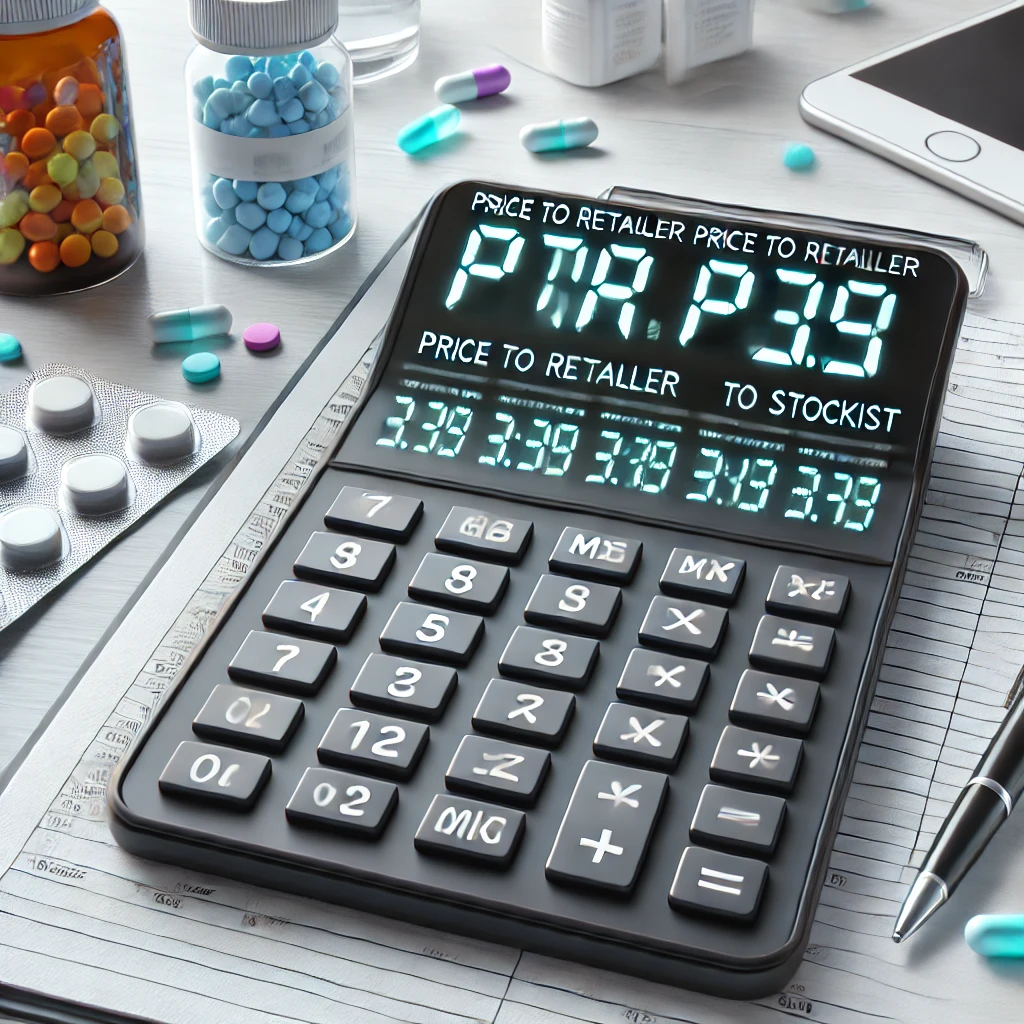
The pharmaceutical industry has its own set of rules under which operational requirements of pricing structures are of great importance. Determining pricing margins such as PTR (Price to Retailer) and PTS (Price to Stockist) averts the risk of overpricing in a way that does not alienate any of the channels in the supply chain. In this article we will explore the specifics of the PTR and PTS Calculator, its purposes and how it fits into other pharma calculations.
What is PTR and PTS in Pharma?
However, the understanding of PTR and PTS in the sense of any pharma projects or calculations should be clarified before such calculations are ubiquitously used in discussion of the calculator:
PTR (Price to Retailer) This is the price a stockist or distributor sells products to a retailer. The PTR assumes no further taxes as GST or VAT.
PTS (Price to Stockist) Price which a manufacturer sells its pharmaceutical product to stockist or distributor. The price is the floor for all further calculations as to pricing for the buyers further down the chain.
How PTR and PTS Are Calculated
A specific price at each level of the distribution chain of a pharmaceutical product has to be set for profitability purposes, but still able to compete.
PTR Calculation Formula:
PTR = MRP – (MRP × Retailer Margin %)
In this formula, the MRP (Maximum Retail Price) is the final price at which the consumer purchases the product, while the Retailer Margin is the percentage markup the retailer earns on the sale.
PTS Calculation Formula:
PTS = PTR – (PTR × Stockist Margin %)
The Stockist Margin represents the profit a stockist earns when selling to the retailer.
Why Use a PTR PTS Calculator?
These margins are, of course, derivations. Therefore, to understand or calculate these margins PTS and PTR manually is quite a challenge, more so given the number of pharmaceutical products at issue. A PTR and PTS calculator assists manufacturers, stockists, and retailers in:
- Completing pricing activities by simplifying complex computations.
- Achieving correctness and minimizing human-related errors.
- Completing tasks within a short period by ensuring that results are generated without unnecessary delays, even when several products are concerned.
- Such calculators also contain an MRP box, retailer margin box, stockist margin box where upon filling in the commencement parameters, the PTR value and the PTS value are defined respectively.
Pharma Calculator: A More Inclusive Pharmaceutical Pricing Tool
Pharma Calculator is much wider than just PTR and PTS and includes more broad-set calculation tasks required in the pharmaceutical field. Here are features worth noting:
- Cost per Tablet or Capsule: This enables manufacturers to work out the total cost incurred as production costs per tablet/capsules which goes a long way in fixing the MRP.
- Tax and GST Calculations: There are various laws that are in place governing tax. Adjusting computing of VAT rates such as TDS on pharma products is one more big issue.
- Discount Calculations: Pharma products are sometimes sold at discounted prices by wholesalers and distributors and a pharma calculator makes a quick work of the discounted price.
- Profit Margins: Both the retailer and stockist percentages are very important considering they take a large part in the formulation of the pricing strategy throughout the entire chain.
How to Use a Pharma Calculator for Your Business
The following are the steps recommended in using a Pharma Calculator:
- Input Basic Information: First fill in basic information like MRP, retailers margin, and stockist margin.
- Set Tax and Discount Rates: Enter tax details or discounts to be applied appropriately based on the prevailing tax rate or on any given discounts.
- Review Results: Once all the information has been entered, the calculator shows patients PTR, PTS as well as the total recommended price including tax_,_- the selling price, thus making it easier to oversize the pricing strategy.
pcd calculator In Pharma
Key Benefits of Using PTR PTS and Pharma Calculators
- Time Efficiency: Reducing the manual effort of making calculations is of great importance more so for manufacture and distribution organizations dealing with many products at once.
- Cost Accuracy: When you eliminate errors in computations and calculations, you avoid charge backs due to wrong taxes and other costs incurred.
- Regulatory Compliance: It really helps to have a calculator in that once the structure is followed; it is almost impossible to go against industry standards and price structure regulations.
- Profit Optimization: With calculators, one is ensured that the undressed pricing strategies do not jeopardize market competitiveness by selling at a lesser price than the cost.
Conclusion
In the pharmaceutical industry, accurate pricing calculations are critical for profitability and compliance. A PTR PTS Calculator and Pharma Calculator are essential tools that help streamline the process, ensuring accurate pricing across the distribution chain. By automating calculations such as PTR, PTS, taxes, and profit margins, businesses can focus on scaling and optimizing their operations without worrying about pricing errors.
By using these tools, companies can improve efficiency, accuracy, and ultimately profitability, keeping their business competitive in the fast-evolving pharmaceutical market.